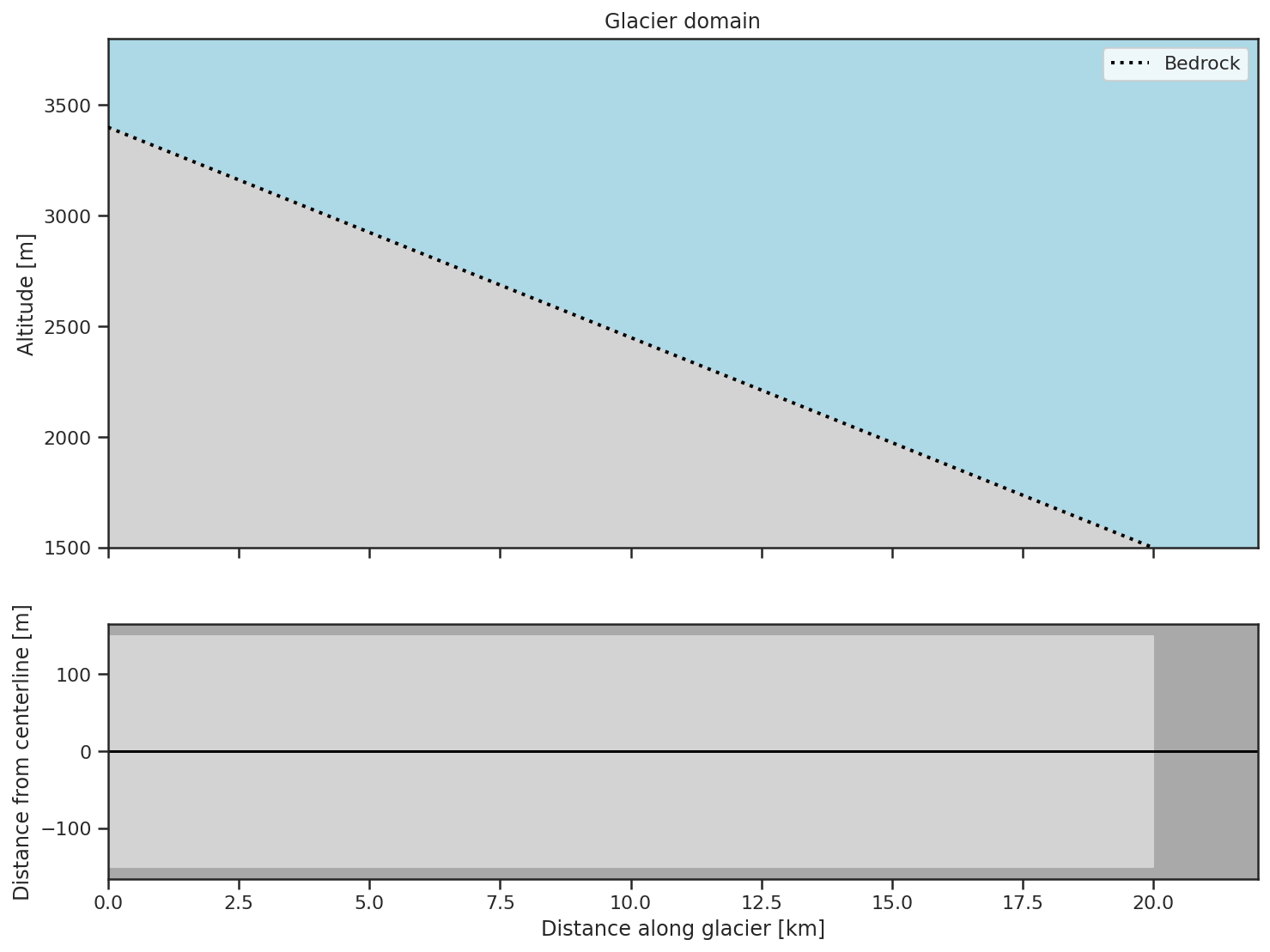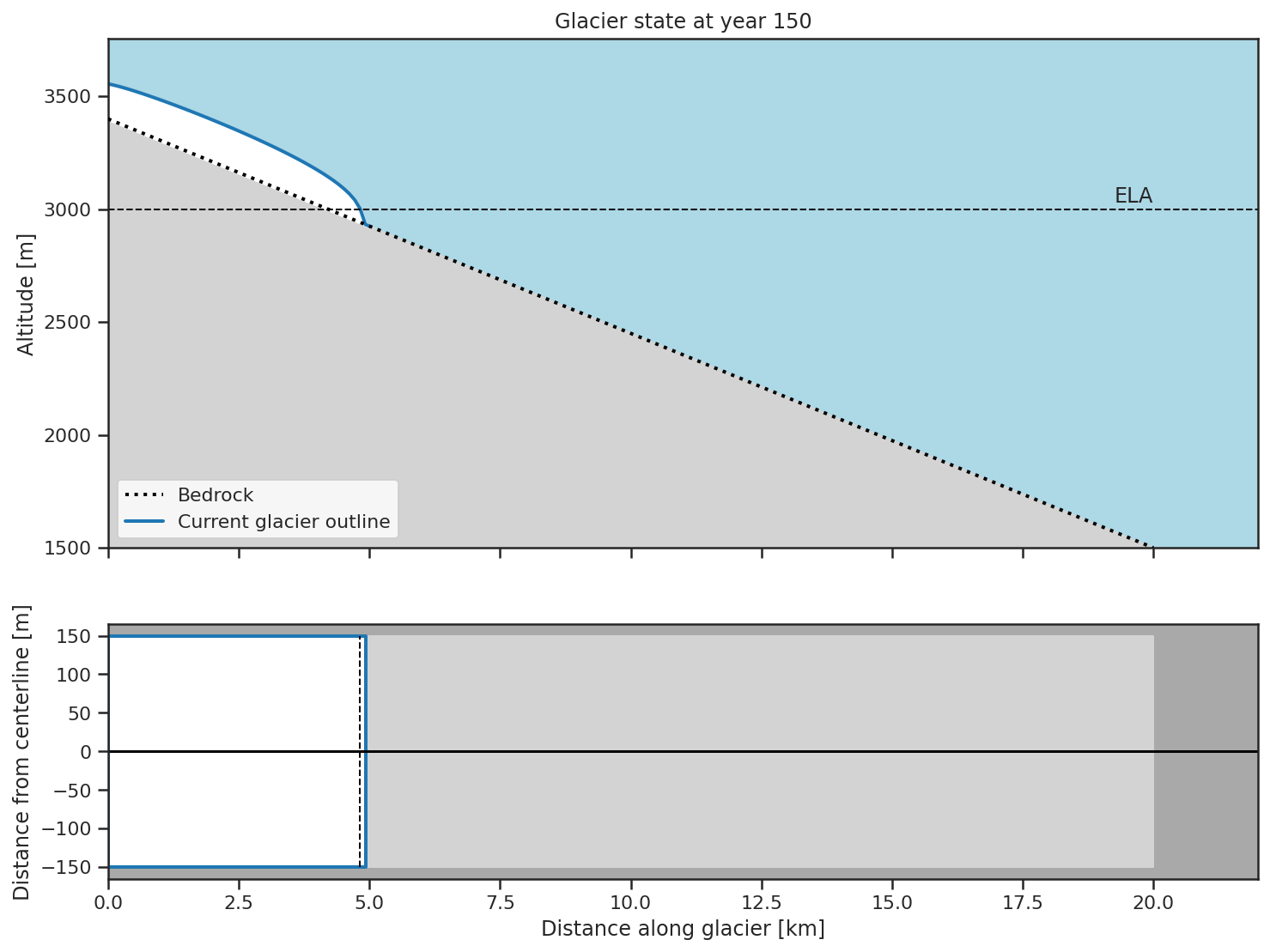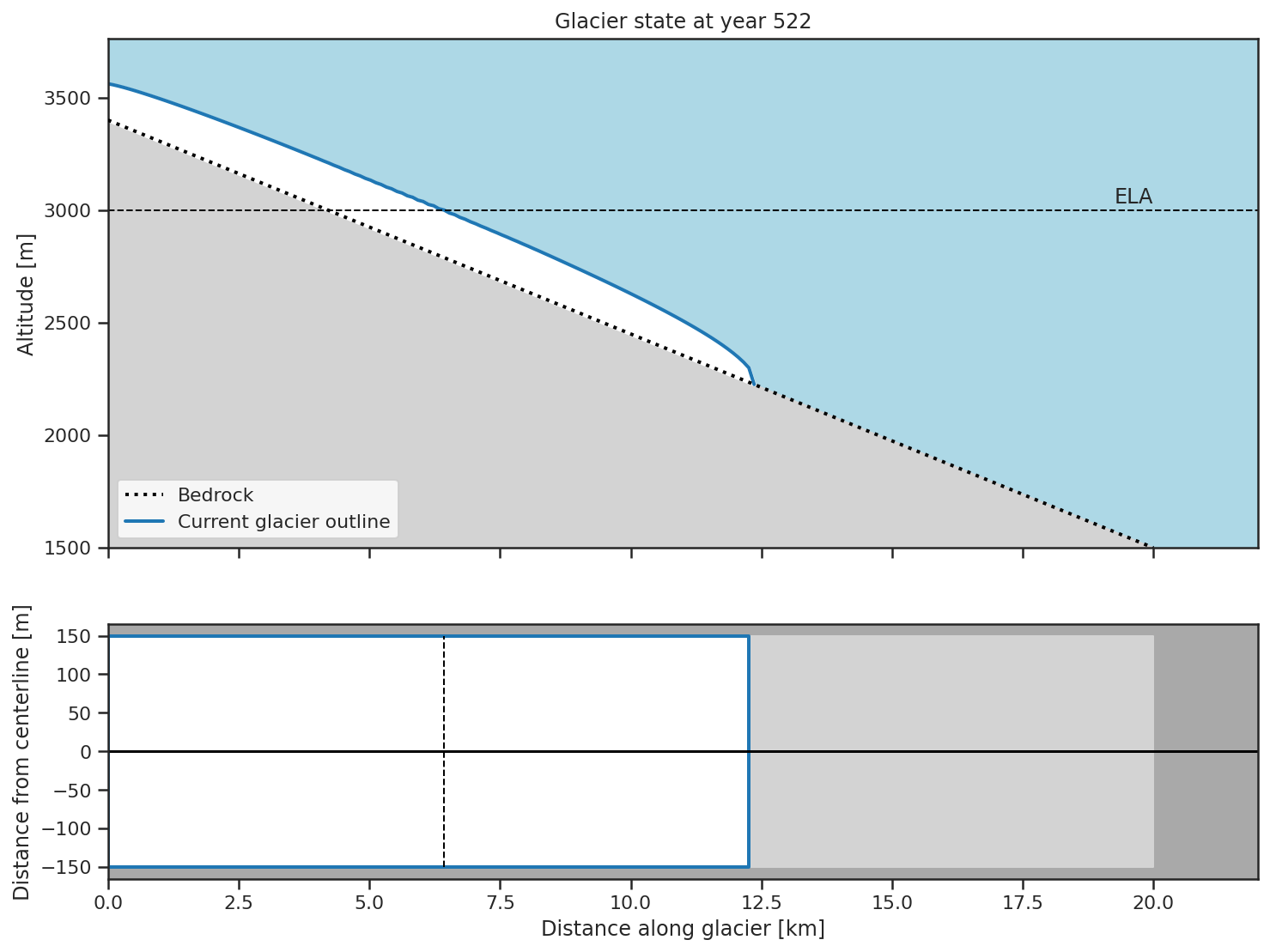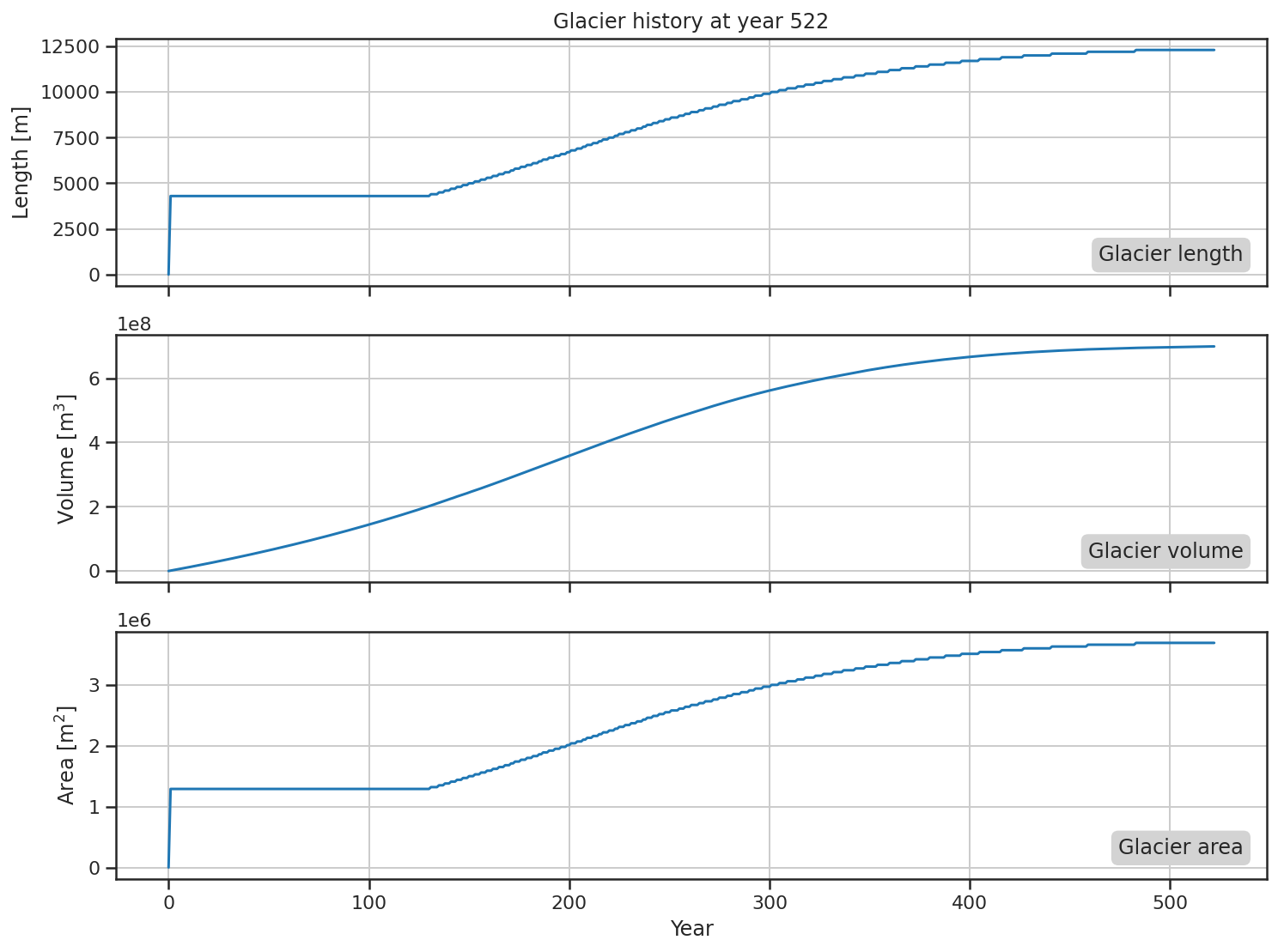The oggm-edu python package#
The oggm-edu python package is a “simplification layer” meant to hide many
of the complex OGGM internals to the students. In fact, it can be seen as a
fully functional glacier flow model optimized for education.
To see it in action, visit our dedicated oggm-edu notebooks website, or run them yourself on MyBinder:
For a complete documentation, visit the full oggm-edu package documentation.
Important
This programming interface is relatively new (2022). It replaces a much simpler previous interface, which is still accessible to our users with:
from oggm_edu import legacy
Don’t hesitate to let us know if you encounter any problem with the change!
A 2 minutes introduction to the package#
The main objective of package is to propose an expressive syntax and preconfigured plotting functions:
from oggm_edu import MassBalance, GlacierBed, Glacier
# Create the bed
bed = GlacierBed(top=3400, bottom=1500, width=300)
# And the mass balance
mass_balance = MassBalance(ela=3000, gradient=4)
# And finally the glacier!
glacier = Glacier(bed=bed, mass_balance=mass_balance)
glacier.plot()

To grow the glacier we can either progress the glacier to a specified year:
glacier.progress_to_year(150)
glacier.plot()

Or progress the glacier to equilibrium:
glacier.progress_to_equilibrium()
glacier.plot()

It is just as easy to inspect the history of the length, volume and area of the glacier:
glacier.plot_history()

This is just a small part of what is possible with the new interface.
For a complete documentation, visit the full oggm-edu package documentation.
We hope that you will find this interesting, and are waiting for your feedback!

